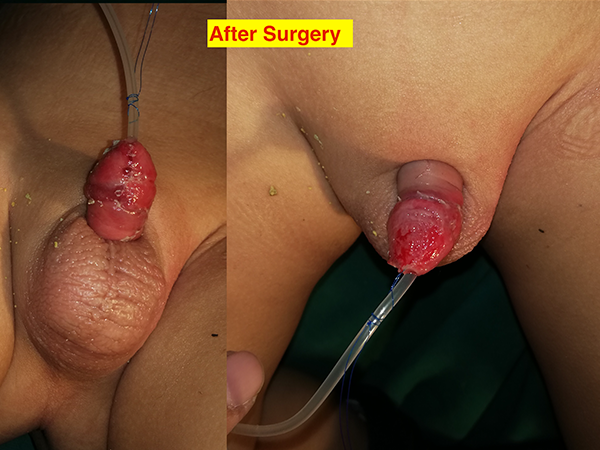
Life Changes After Hypospadias Surgery
Hypospadias is a birth defect that affects the male reproductive system. A boy with this condition has abnormal development of the urethra and thus the opening of the penis is not at the tip. It often causes problems urinating as well. This blog will explore how hypospadias surgery can change a man’s life for the better.
Hypospadias and their types
Hypospadias is a birth defect that affects the male reproductive system. A boy with this condition has abnormal development of the urethra and thus the opening of the penis is not at the tip. It often causes problems urinating as well. There are three types of hypospadias:
- Urethral opening is located on or near the head of the penis
- The urethral opening is located in front of glans but behind shaft
- The urethral opening is located on the underside of the penis or near the scrotum
The experience of living with hypospadias
Anyone who has ever had to live with hypospadias knows how challenging it can be. But when you have surgery to correct the problem, it may seem overwhelming at first. There are several changes that will happen after this surgery, which is why we want to explore them here.
For starters, your recovery time will depend on whether you had a minor or major procedure. Minor surgeries might only take about one week for full recovery whereas major surgeries can take up to six weeks. You should also expect changes in your penis size as this is a common side effect of the surgery. Your ability to urinate will also change and this can be hard for some people to get used to because it requires help from others or an incontinence product like a catheter.
After this surgery, even something as simple as walking downstairs can feel different because of the surgery’s impact on the nerves in your penis and pelvic area. And while these changes might sound scary, they’re all worth it if you end up happy with the results of your surgery in the end!
What are the causes of hypospadias?
Hypospadias is a birth defect that can be caused by one (or more) of three things:
- Genetics (inherited from mother or father)
- Excessive testosterone in utero (in the womb)
- Premature birth
Who will be affected by hypospadias?
The condition affects one in every 125 males. That translates to about 300,000 people in the United States alone. And this is not a rare occurrence in other parts of the world either.
Post-surgery consequences
It can take time for the body to heal after surgery. There are a few things that have to heal before a person has fully recovered. It’s important to know what they are and how to care for them so that there is nothing preventing you from getting back to your life.
– First, it takes about two weeks for the penis to stop feeling swollen and sore because of the surgery. This will go away on its own but it’s important not to touch or rub the area because this could cause pain or infection.
– Second, men who had their testicles removed will need artificial ones (testicle prostheses) in order to urinate normally, as well as feel sexually whole again. Some people might be able to get away with not wearing these prostheses all the time, such as during sleep, but for many people, wearing these prostheses 24/7 is necessary in order to function properly.
– Third, it can take up to one year for scars from surgery on the scrotum skin and penis shaft skin to fade significantly enough that it doesn’t stand out like a sore thumb when exposed in public or even under clothing.
How does surgery work to fix hypospadias?
The surgery for hypospadias is called a chordee release. This surgery will correct the curvature of the penis which causes difficulty while urinating. The surgeon will also use this surgery to lengthen the urethra so that it can empty urine out of the bladder without any problems.
The surgical procedure
There are different types of hypospadias surgery. One type is an operation to move the urethra to a normal position on the penis. The operation can be done in one or two stages, depending on the extent of the problem. After hypospadias surgery, a man will have a urethra opening at the tip of his penis and may also have corrective surgery for problems caused by the condition. The procedure has improved the quality of life for many men with this condition.
The recovery process
When a man has hypospadias surgery, the doctors will use a piece of skin from the penis and make an incision on the top of the penis. They then move that skin down over the shaft and put it in place at the urethra.
It takes about two weeks for that skin to heal before the man is able to urinate again. During this process, there are things a man can do to help with their recovery. There are many different things a man can do after surgery like keeping clean, taking care of their wound, or protecting themselves against infection.
What are the benefits of surgery?
Surgery can be one of the most beneficial decisions a patient makes. It can provide relief from the bladder and urinary tract infections, improve fertility, and help with erectile dysfunction.
It also has psychological benefits for the patient. Men who have had surgery often say that they feel more confident, relieved, and liberated after their surgery. They have been able to do things they were never able to before due to their condition like showering in public or wearing tight-fitting clothes without fear of embarrassment.
What can happen without surgery?
Without surgery, a man with hypospadias may have difficulty urinating and can experience ongoing urinary tract infections. They also may not be able to ejaculate or have children. Surgery is the only way to correct the problem, but it’s important to know that there are different surgical methods available.
Conclusion
Hypospadias is a common birth defect that affects the male reproductive system. It is a deformity that causes the urethra to open on the underside of the penis and can make urination difficult.
Hypospadias surgery is a procedure that takes place in children, who are between 3 and 18 months old, and the surgery is designed to correct the deformity.
It all starts with foreskin removal. Then, the urethra is redirected to a more natural position on the head of the penis. The surgeon then constructs a tube, out of the skin from the foreskin, to construct a urinary opening.
The recovery process from Hypospadias surgery is long and can be challenging, but it is worth it, in the end, to grow up with a healthy penis.




